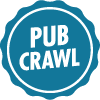All about Pass Pages
Hi all! Julie here.
Erin Bowman wrote a great post about the steps in the editing process here, but I wanted to dedicate an entire post to pass pages.
Full confession—despite the fact that I’ve been around writers for years and heard a lot about “pass pages,” I didn’t fully understand what they were until I was about to receive my own! So chances are, if you’re reading this post and you’re not already a traditionally published author, you probably aren’t one hundred percent sure what they are either. No worries! Today I’m going to talk about what pass pages are and the purpose they serve in the process. I’m also going to share my personal experience with them, because I didn’t know what a big impact they were going to have on me until that big envelope came in the mail!
The basics of pass pages…
Pass pages are the actual pages of your book, laid out as they will appear when the book is bound. They are created from the text after copyedits are done. As the author, you’ll receive these pages for your review, which means this is one more time you will be expected to read your own book (after having read it and re-read it for several rounds of revisions, line edits, and copyedits,) but it’s also one final chance to catch mistakes and make any (small) last minute changes.
I first learned about this stage of the process when I confessed to my editor that I was terrified about the prospect of finalizing the text and knowing the book could no longer be “fixed.” (I’m that person who dreads finishing something, because as long as it isn’t finished, it can always get better.) My editor assured me that even after line edits—even after copyedits—I could still make small changes. Because the final opportunity to make those changes didn’t come until I got my pass pages.
When you receive your pass pages, you will be able to review the book as it will appear in the bound copies. It gives you a chance to not only review one last time for typos or errors, but it also gives you the chance to see if the layout caused any unforeseen issues, like a word left alone by itself at the top of a page. You’ll read the text, but a copyeditor will also read it. You write your changes or notes directly on the page (in a color other than black so it stands out!) and send it back by your deadline. While you read through it, a proofreader reads though it as well, so after you return your pages, you may still receive questions from the proofreader, if there are any issues they spotted that may have been missed before.
Also, it’s interesting to note that the changes made at this stage will be incorporated into the final book, but not into the ARCs, since your ARCs will be at the printer by the time you are reviewing your pass pages. (This is why ARCs have that note on the front that says “Uncorrected Proof.”) Also, if you have an issue with the appearance of the text on the page, this is the time to say something, since changes can still be made. One author I know didn’t like the font that was used on sections of her book that were meant to look like handwriting. Pass pages gives an author the chance to discover these issues and have them addressed.
So that’s the mechanics of pass pages. But there’s more to it than that.
The emotional side of pass pages…
For me, seeing these pages for the first time was the most emotional experience of the publishing process so far. When I pulled the stack of pages from the envelope and saw my words laid out like a real book… I cried.
The first page I saw was the title page. I’m not sure why holding the title page felt more real to me than seeing the cover—after all, it’s the same information on both!—but I think it was the tactile experience of holding it in my hands. It’s on paper, just like a real book! Also, I saw for the first time the details created by Erin Fitzsimmons, the wonderfully talented designer who not only designed my cover (which will be revealed on Thursday!) but also the interior of the book. The title page, chapter headings, and page number details were all perfectly suited to the world of the story, and I knew they would support the reader’s experience. This all felt so right, and pretty overwhelming.
The pictures I’ve included here were among many I snapped as soon as I opened the envelope, so I could share the look of the book with my family. I needed to share this “real book” moment! That’s the emotional side of pass pages—the part no one really warns you about.
So that’s it! What do you think? Have you gone through this process yourself? What was your experience like? If you haven’t gone through the pass pages process, do you think you would enjoy it, or do you dread the thought of reading your own book one… more… time… ? Please share your thoughts in the comments!






